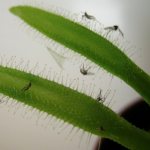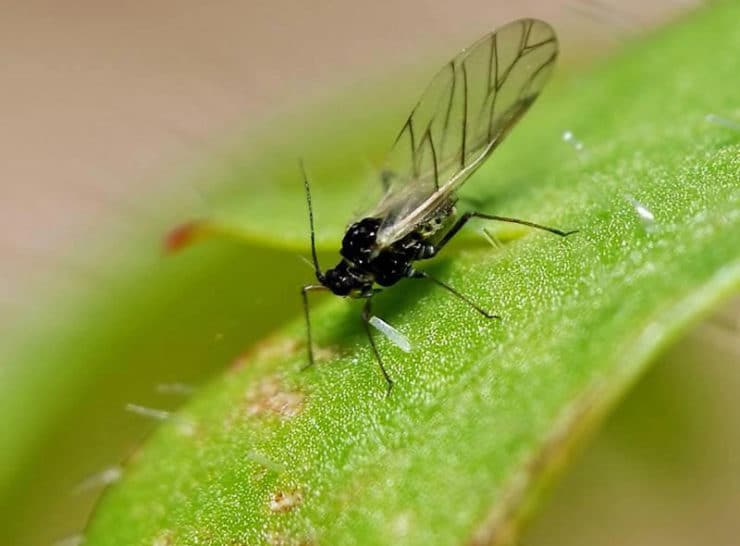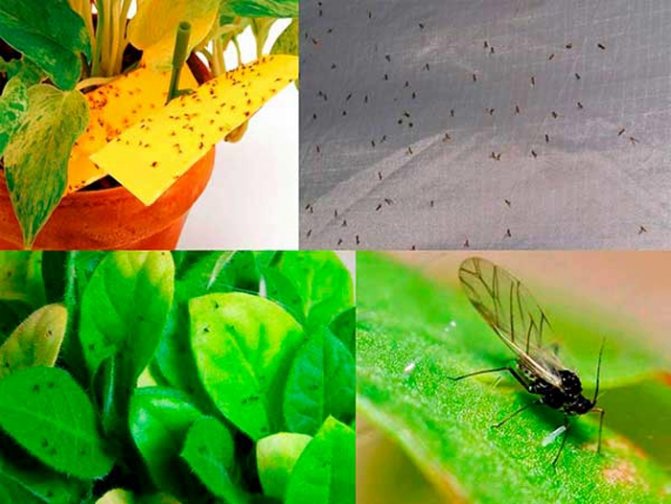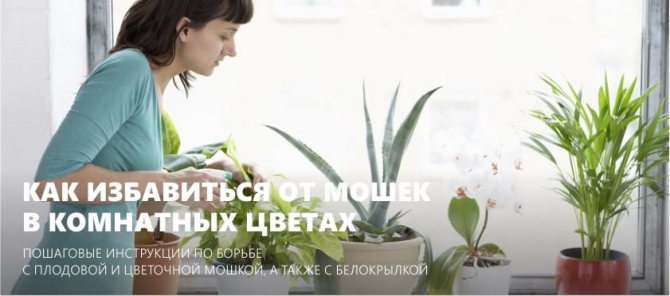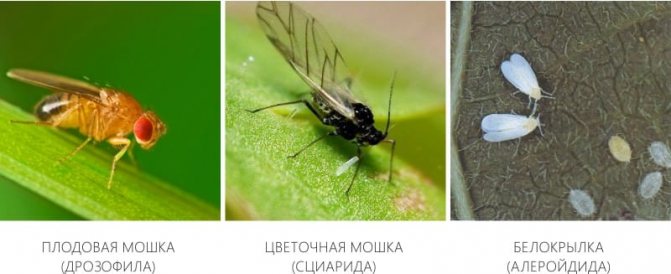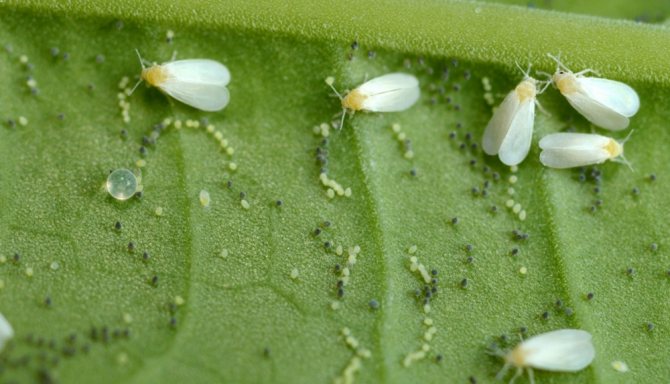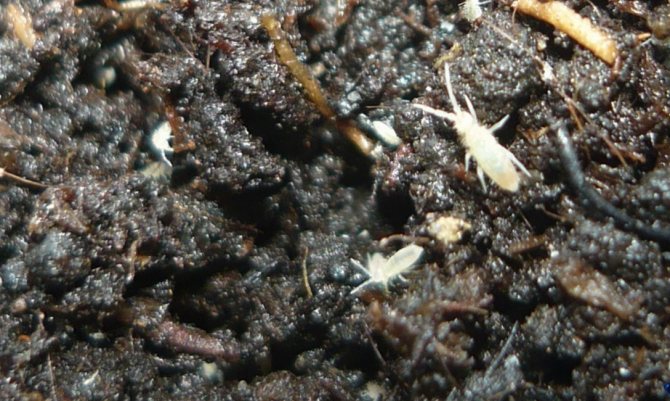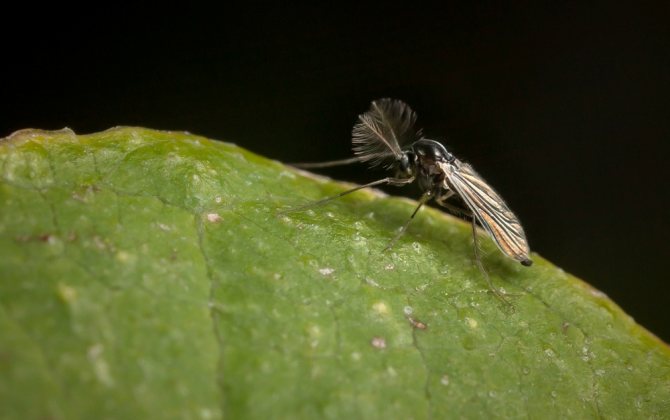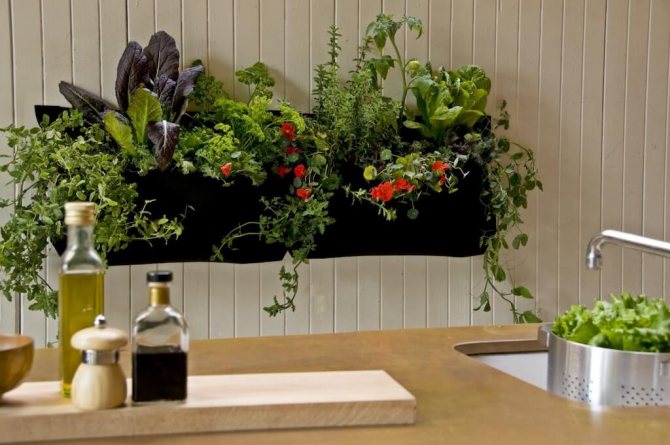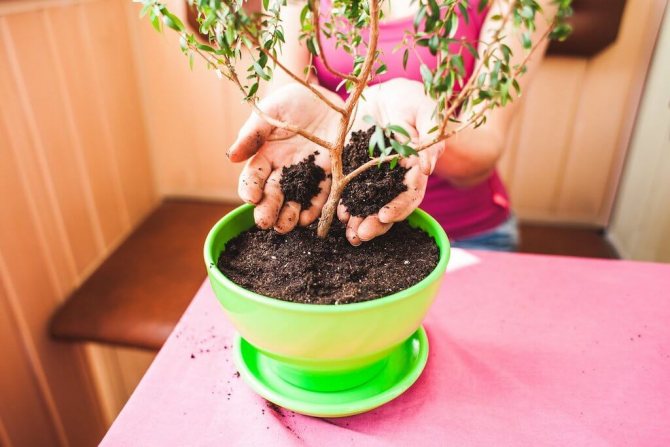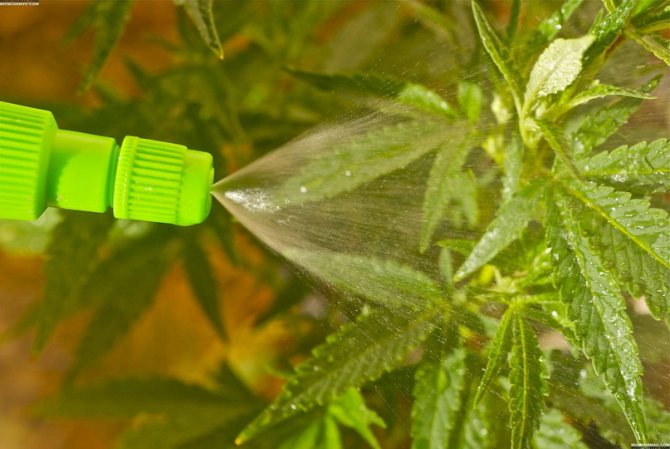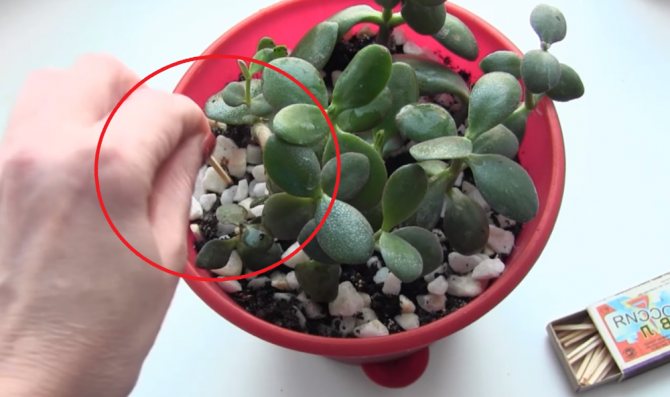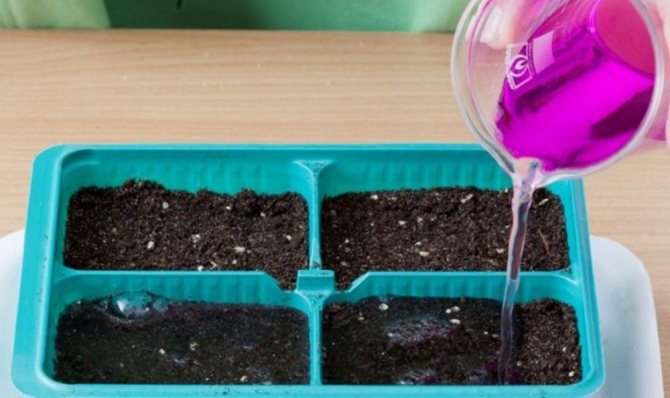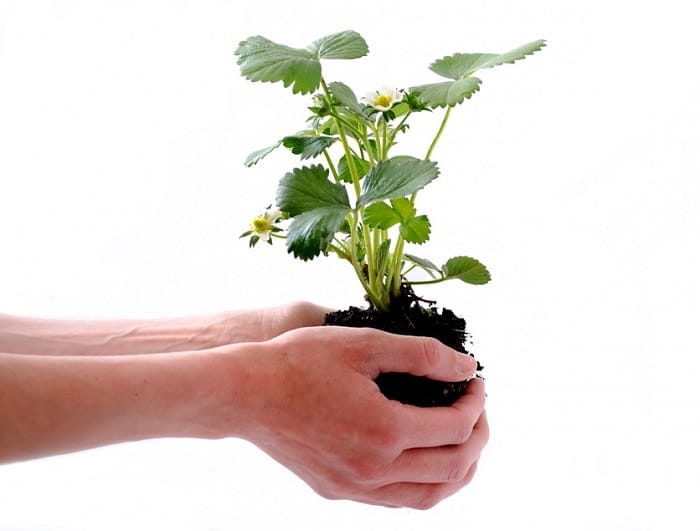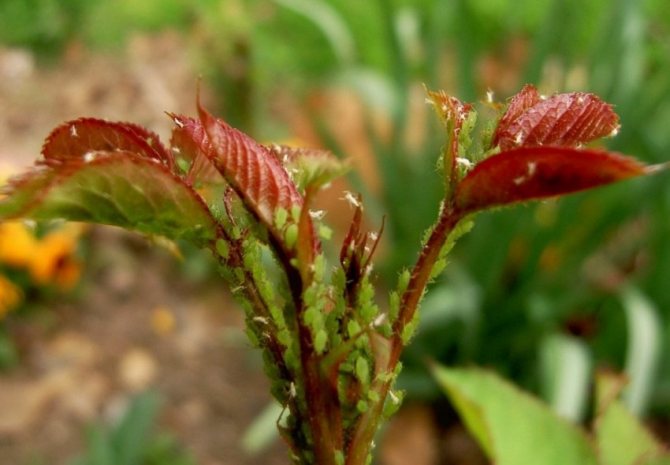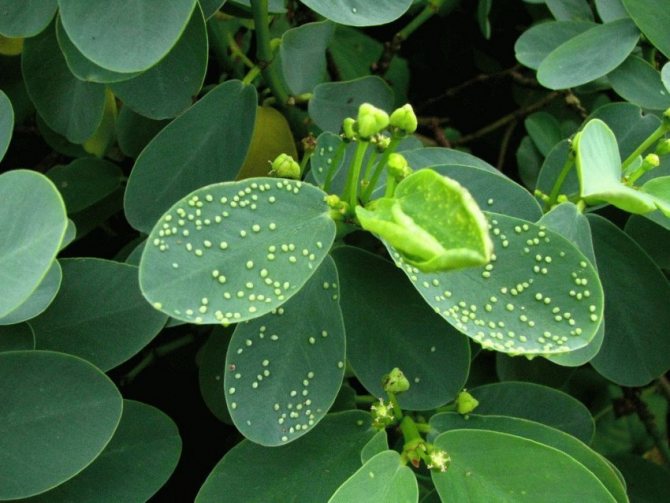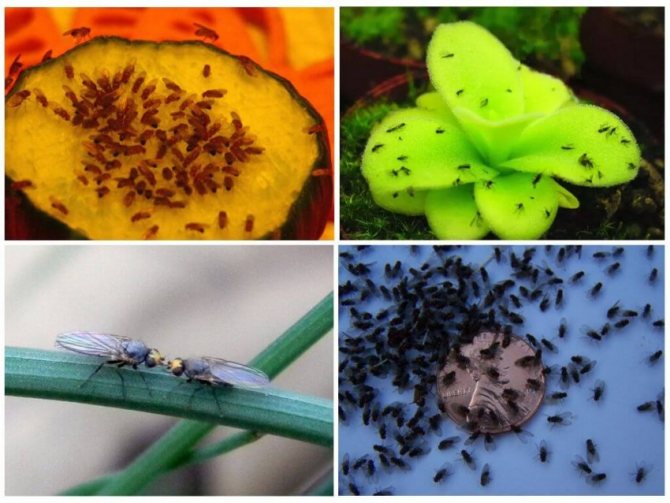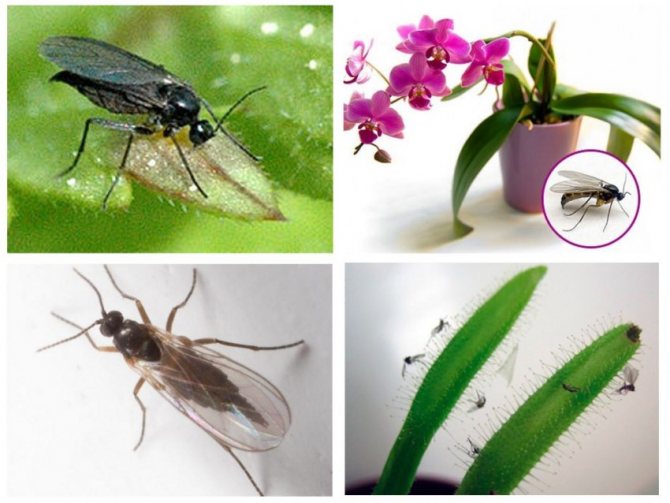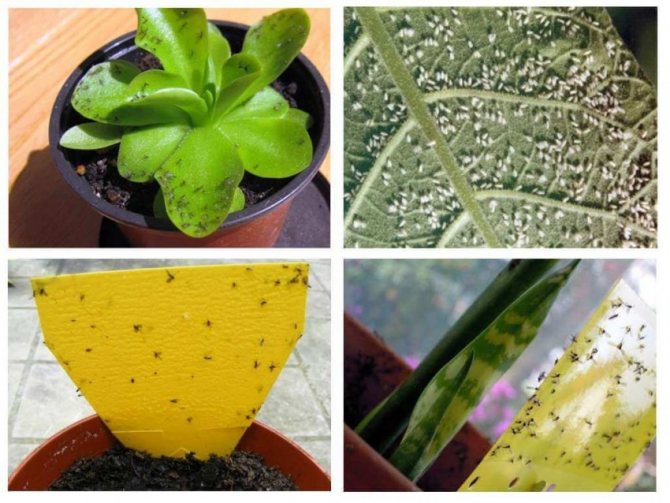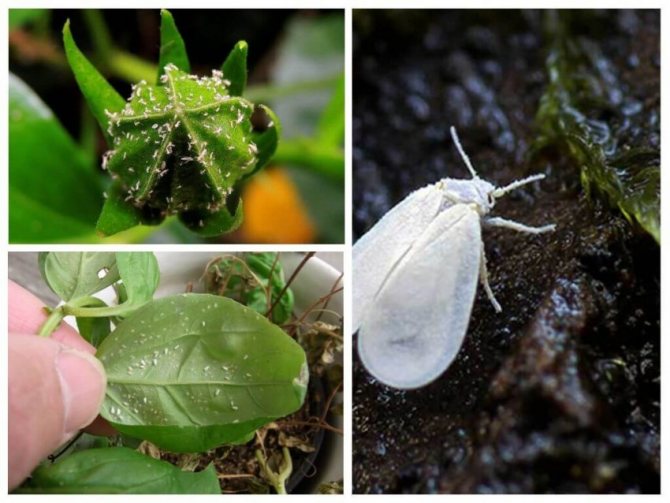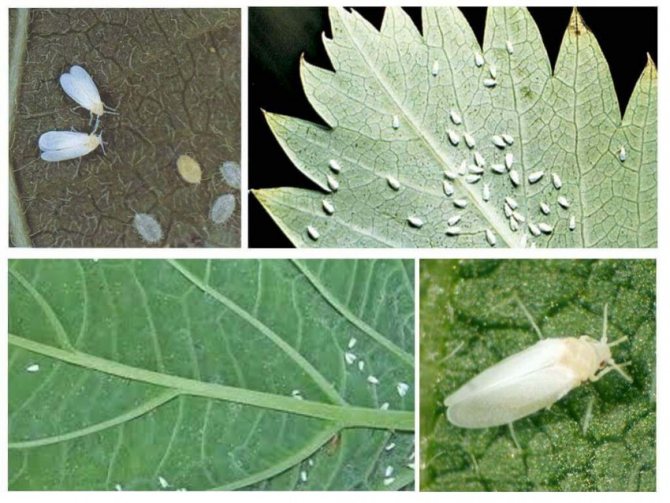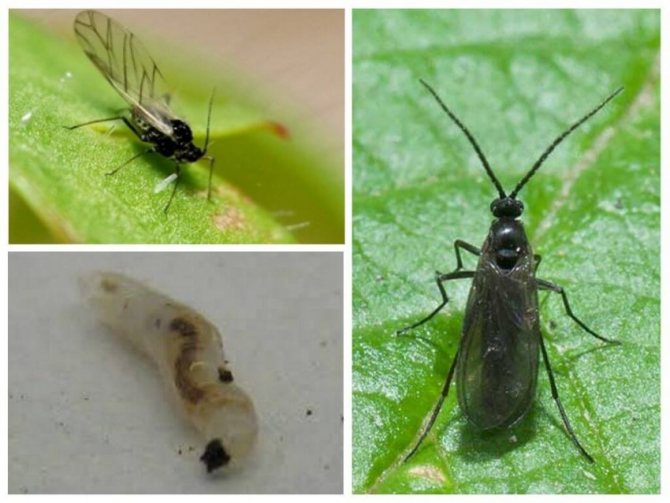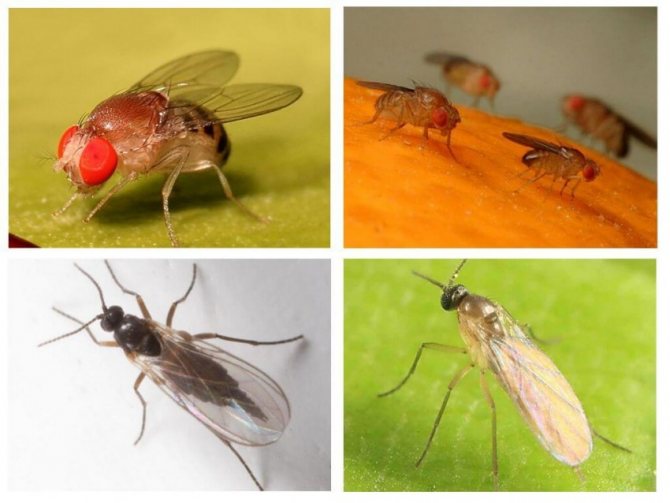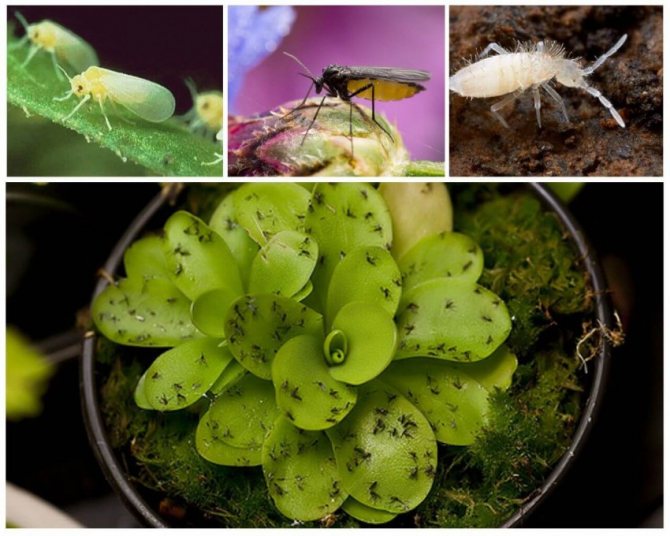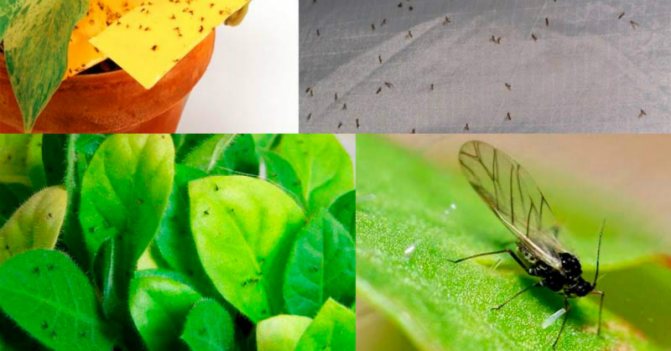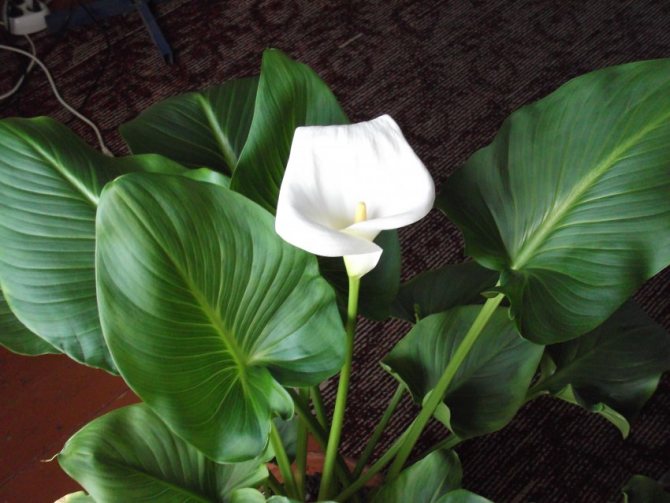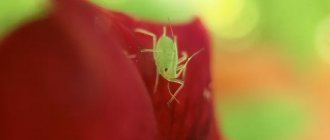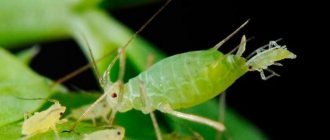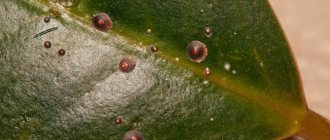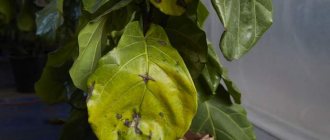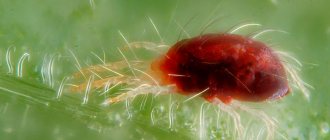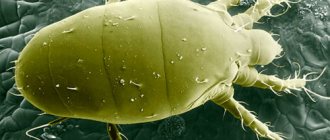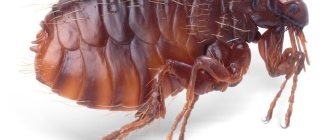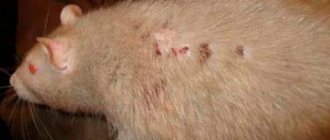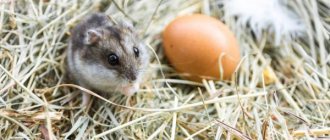To create comfortable conditions for green pets, adherents of home floriculture are ready to go to great lengths: buy expensive fertilizers, special phytolamps, regularly rotate the pots around their axis and defend water for irrigation for days. But even the most reverent care does not always guarantee protection against the appearance of midges in indoor flowers.
Varieties of midges living in flower pots with indoor plants
Soil pests are flying and jumping. Flying flower flies belong to the Diptera family. Jumping insects settle in pots or pallets, crawl in the ground and are very harmful to the root system. To find out which specific small pests have settled on the windowsill, you first need to carefully study their images (see photo below).
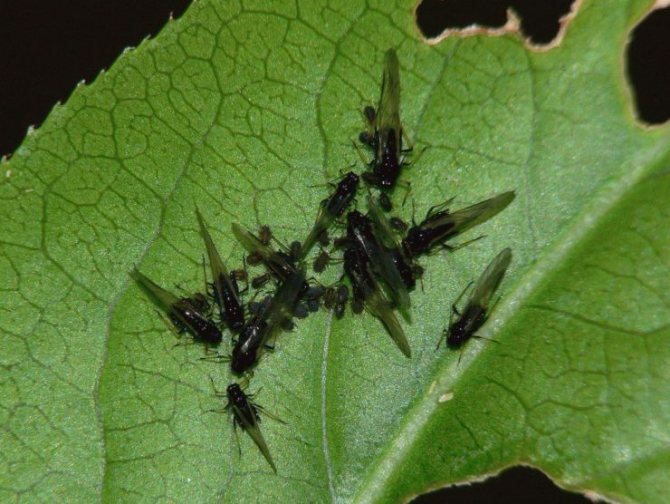
The types of the most common midges:
The reason for the appearance of flies
It is worth remembering that if you often and abundantly water the flowers, then you create all the conditions for the appearance and reproduction of flies. Also, the following factors can lead to the appearance of flies:
- If you put low-quality soil into pots with flowers. This leads to the appearance of midges, the larvae of which were already in the ground from the very beginning. Subsequently, you will have to get rid of flies and their larvae.
- Transplanting flowers into large pots promotes the appearance of harmful parasites. The soil, which is at the bottom of the pot, is well saturated with moisture, only there are no plant roots there. Excessively damp ground is an excellent habitat for parasites.
- Also, midges are attracted by the use of organic fertilizers.
- Flies can enter the house from another room, through a window or ventilation. Moreover, insects that fly into the house perfectly adapt to living in pots with highly moistened soil.
Why do midges start in flowers?
The main reason for the appearance of flower gnats is high humidity in the pot. There is no doubt that plants need moisture, but they should not be flooded. First, waterlogging leads to root rot. Secondly, high humidity is the most optimal breeding environment for many pests.
Other reasons for the appearance of harmful insects:
- Poor quality soil. Doubtful or untreated soil should not be poured into the pots - pest larvae may already be in it.
- Transplanting a flower into an oversized (oversized) pot. The roots do not reach the bottom of the pot, so a lot of excess moisture accumulates there. Dampness contributes to the multiplication of various pests.
- Organic fertilizers. Organic impurities attract insects even when the plants are watered in moderation. Natural fertilizers are better than artificial ones, but they have their drawbacks.
- Stagnant air. Flower midges thrive best in unventilated areas.
- The penetration of insects from the outside. Flies can fly through a window, door or through ventilation, if their habitat is nearby - a garden, a greenhouse. Once in the house, the midges will immediately find a flower pot.
Types of midges
The most common are white (they are also called springtails or breeds) and black (sciarids). Leopard can be seen on constantly flooded soil or near a wet pot.Usually they are small in size (no more than 1 mm), painted in white or yellowish color with a brown tint, and lead an active life, constantly jumping. The larvae they lay cause irreparable harm to the roots of indoor plants. Most often, these midges can be seen in winter or early spring, when moisture is still poorly evaporated from the soil surface.
Black midges annoyingly hover over indoor flowers, and also fly around the house, delivering a lot of inconvenience to its inhabitants, but no more. But for soil and plants, they pose a great danger. A large accumulation of midges contributes to root damage, as well as compacts the soil in the pot and makes it airtight. The scyriads look like translucent worms (their length is from 2 to 5 mm) and a black dot on the head. They appear if you fertilize your pets with decayed leaves, tea leaves or any other organic matter, as well as when using infected land.
How to deal with flower flies?
What to do if pests are in the flowers? It is imperative to fight with them. Insects will actively reproduce, spread throughout the rest of the pots, and destroy indoor plants. Sciarids and fruit flies will attack not only flowers, but the whole house.
There are many ways to deal with midges. Some people prefer ready-made chemical insecticides because they find them to be the most effective. Others do not want to use them in the house and get by with home folk remedies. When all the pests are destroyed, it is necessary to transplant the plant, removing all the contaminated land.
Ready-made insecticides and methods of their application
Shop poison is effective, it allows you to completely get rid of flower parasites. It should be used with a large number of insects.
Varieties of insecticides:
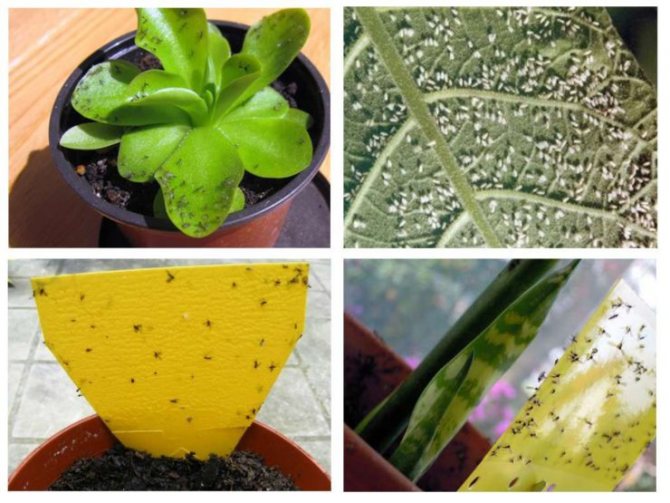

- Sticky fly traps. Special traps or sticky tape are hung over the pots. They work exclusively against flying pests when they first appeared (there are not many of them).
- Fumigators. Turn on the mosquito fumigator daily as close to the flowers as possible to get rid of small parasites.
- Aerosol insecticides against flying insects. Ordinary dichlorvos ("Raptor", "Raid", etc.) is quite suitable. It is necessary to pay special attention to window sills, shelves and stands for pots, and after use, be sure to wet clean and ventilate the room. You can also arrange an insecticidal greenhouse. To do this, spray the soil and a large bag from the inside abundantly. Place the whole plant in it and tie it tightly. All insects will die in 4–5 hours.
- Systemic insecticides. Specialty stores sell solutions based on thiamethoxam or imidacloprid. When processing, you must carefully follow the instructions for using the poison. Insects gradually develop immunity to the active substance, so it is better to alternate the drugs. The most famous means: "Thunder" and "Thunder-2", "Agravertin", "Bazudin", "Mukhoed", "Aktara", "Karbofos", "Aktellik", "Confidor", "Mospilan", "Fitoverm" and dr.
Folk recipes for pest control
The main advantage of folk remedies is their safety for others. They are optimal when there are small children, people with allergies or animals in the house. Many are very effective. Sometimes it is enough just to dry the soil. When the excess moisture evaporates, the pests will have no habitat.
The most popular and effective remedies in the fight against flies:
- garlic;
- tobacco;
- cinnamon;
- matches;
- laundry soap;
- ammonia;
- potassium permanganate;
- vinegar;
- wood ash;
- pungent odors;
- celandine, etc.
Pharmacy preparations against flies (ammonia, potassium permanganate, etc.)
Ammonia. Ammonia is a versatile agent that enhances the growth of indoor plants and helps eliminate parasites. Experienced gardeners regularly use ammonia to water their plots.Water the flowers with a solution of ammonia, diluting 25 ml of alcohol in 2 liters of water.
Potassium permanganate. When watering, replace ordinary water with a weak solution of light pink potassium permanganate. As a rule, a couple of waterings are enough.
Balm "Zvezdochka". Insects do not tolerate its pungent smell. If you lubricate the edges of the pots with an asterisk, it will help cure the flowers from midges at home.
Boric acid. Prepare a solution with your own hands, dissolving 1 g of powder in a liter of water, and then water the plants with it.
Citramon. 2 tablets are ground into powder, dissolved in 1 liter of water. Acetylsalicylic acid and caffeine have a detrimental effect on midges.
Hydrogen peroxide. A tablespoon of 3% peroxide is diluted in 500 ml of water. This solution will not only help remove pests, but also heal the soil.
Plant-based products (from garlic, tobacco, onion husks, etc.)
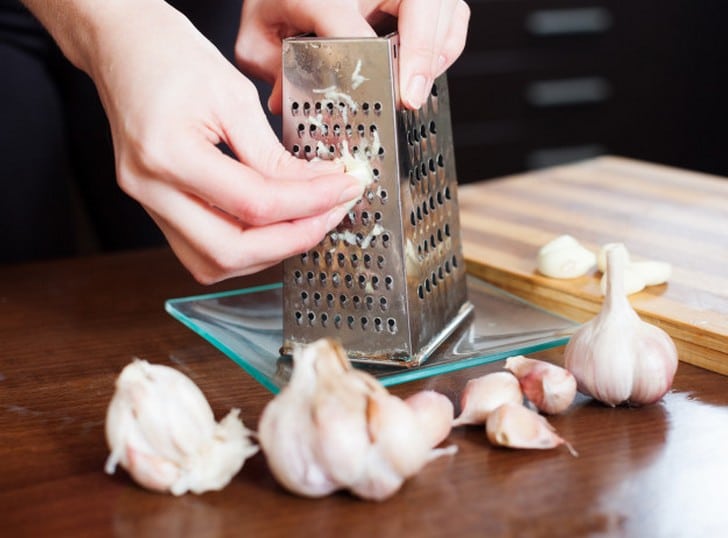

Garlic. The specific smell of garlic does an excellent job with the problem. Grinding 3 large cloves with a grater or garlic, pour the resulting mass with 1 liter of boiled water and leave for a day (at least 4 hours). Leaves, stems and soil are sprayed with ready-made infusion 3-4 times every 5 days.
Tobacco. Tobacco 20 pcs. the strongest cigarettes are filled with 0.5 liters of hot water. Insist the remedy for 5 days in a dark place. The stems and green leaves are sprayed with tobacco infusion, without touching the soil, at least 3 times with intervals of a couple of days. There is a faster way. After loosening the earth, a layer of dry tobacco is poured onto it. Midges in indoor flowers will not withstand such an unpleasant smell.
Toxic greenhouses (insecticides)
To stop the white midges on indoor flowers from bothering you, use insecticides. Water the plant, wait until the soil is completely dry and loosen it well. Put the pot in a bag, spray with “Dichlorvos” and tie it so that the poison does not spread throughout the apartment. This technology is called “toxic greenhouse. Pests die 5-6 hours after treatment.
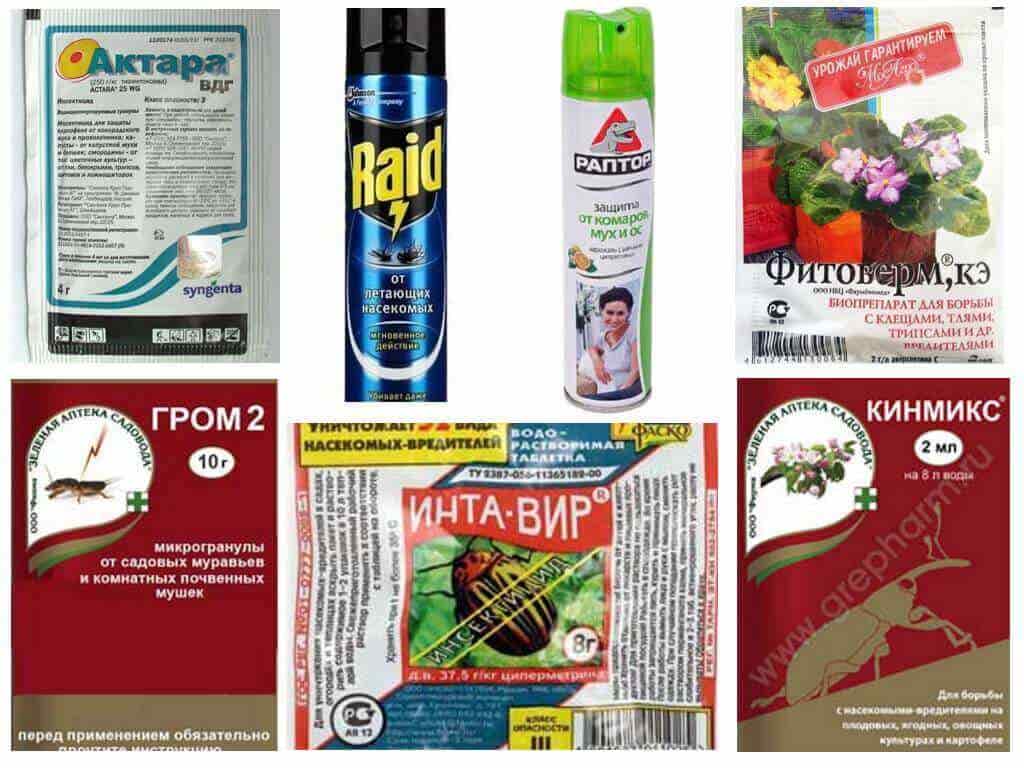

We recommend eliminating the remaining midges by means of special traps placed in different corners of the room. After 8 days, the procedure is repeated. And here is a list of drugs that can replace Dichlorvos:
- "Thunder-2";
- "Mukhoed";
- "Karbofos";
- “Aktara”;
- "Agravertine";
- "Raid";
- Raptor;
- Actellika;
- "Neo".
How to prevent gnats in flower pots?
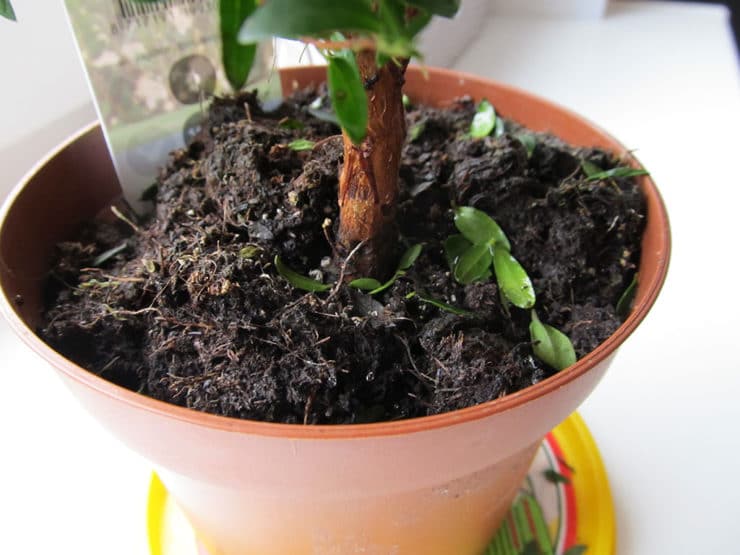

Simple prevention methods can help prevent soil pests. In order not to have to get rid of them, you must:
- Observe cleanliness. Immediately remove withered and fallen flowers and leaves, preventing their rotting.
- Water the soil sparingly, avoiding dampness.
- When planting or replanting, choose soil from a trusted manufacturer. Also, the soil can be steamed or kept in the cold for a short time (in the freezer). If the pot is not new, it is treated with boiling water or potassium permanganate solution.
- Loosen the soil regularly. This will dry it out faster.
Loading ...
Preventive measures
You can minimize the likelihood of these insects in the house by observing the following rules:
- Control the watering of your plants. Do not overdo it with the amount of water. After all, midges are very fond of moisture.
- Water indoor flowers with plain water is enough for them. In no case should tea decoctions be used as watering.
- Take care of the plants and their surroundings. Potting soil should be clean and dry. Remove wilted leaves and inflorescences in time.
- After buying the soil, steam it well or freeze it.
- When transplanting indoor plants you need to process the pot with boiling water.
- Do not use contaminated soil. Land with decaying remains is completely unsuitable for replanting a houseplant.
- Loosen the soil more often so that the water does not stagnate and nourished your plant well.
- Powder the surface of the soil ash or sand.
Fitoverm from midges: instruction
To remove midges, you must adhere to the scheme indicated in the instructions. It is important to observe consumption rates and frequency of treatments.
Preparation of the solution
You need to prepare the product immediately before use, otherwise it will lose its properties. The contents of a 2 ml ampoule are dissolved in 200-250 ml of water, mixed well.
Treatment
The finished solution should be sprayed on the leaves and water the soil. In most cases, 2 treatments are sufficient, which must be carried out at intervals of 7-10 days. If the pest does not die, then it is worthwhile to carry out additional spraying. The maximum allowable number of treatments is 4 pieces.
Precautions
Despite the fact that Fitoverm is a biological product, it belongs to moderately toxic substances. If you neglect the safety rules, an allergic reaction, headache, dizziness and dyspeptic manifestations in the form of abdominal pain, nausea, and vomiting are likely.


It is necessary to prepare and apply the solution using personal protective equipment:
- glasses;
- respirator;
- gloves;
- protective clothing.
During processing, do not eat, drink or smoke, touch food or objects. After the procedure, you need to wash your hands and wash your face, rinse your mouth with clean water. Wash things, and discard the bag containing the insecticide.
Description and principle of action Fitoverm
The biological product is an insectoacaricide of intestinal action. Available in 2 ml ampoules, 2 pcs in a package. This amount is enough for two treatments.
Fitoverm is effective against ticks and other flower insects:
- midges;
- flower beetles;
- thrips;
- aphid.
The tool is one of the most effective in the fight against pests of indoor plants. The active substance is absorbed into the body of insects through the outer integument after contact with leaves or soil. The poison affects the nervous system, paralyzes and kills the midge. After 6 hours, the insects stop feeding, they can sit without moving for 2-3 days, and die for 5-7 days.
Plants most often harmed by midges
Midges in indoor flowers can be found in absolutely every flower pot. However, more often than not, each of the pest species chooses a group of the most suitable plants for themselves.
- The black gnat prefers perennials with leathery or downy leaves. They can be found in violets, anthurium, poinsettia, ficuses. They also like to feed on the roots of hibiscus, saintpaulia, azalea. The first signs of damage are the loss of leaf turgor and a halt in the growth of green mass. By provoking a deterioration in the condition, they cause a decrease in immunity. The flower can develop a secondary infection or be attacked by a virus.
- Orchids, begonias, roses, fuchsias are often attacked by suckers. In small quantities, they do not harm, but after an increase in the population, they are able to destroy young roots and shoots. Young seedlings, which are watered abundantly, are especially harmful.
- White wing can settle on many plants: nephrolepis, clerodendrum, pelargonium, aglaonema, citrus fruits. It is especially harmful for vegetable seedlings: cucumber, tomato, eggplant. This is a malicious pest of greenhouses and greenhouses. Plants lose their decorative appearance, a sooty fungal bloom appears on the leaves, such leaves must be removed.
Mechanical method
To enhance folk or chemical methods, a change of soil in a pot is used. In this case, the root system is carefully examined, rotten fragments are removed, the new soil is sterilized. This is the only way to remove dormant black mosquito larvae, as they are very adaptable to changing watering regimes.You can get rid of the rest of the insects by transshipment of a lump of soil with the removal of the upper infected 3-4 centimeters.
Drosophila can be lured into a trap. You will need half an apple, the bottom of a plastic bottle, and a transparent bag. The fruit is placed in a container and covered with polyethylene on top. Insects enter through small holes, but cannot get out.
Against jumping springtail larvae, a fairly simple method is suitable, involving soaking. An infected pot is placed in a deep container and poured with warm water to a level above the soil surface by a couple of centimeters. The larvae emerge, they are removed, and the container with the plant is dried.

